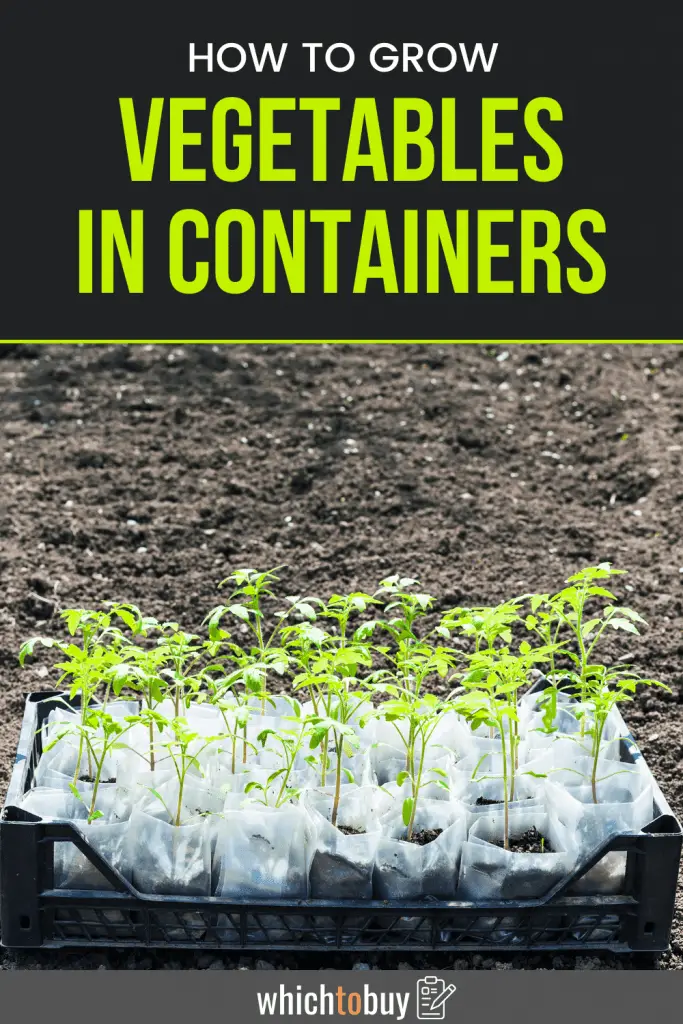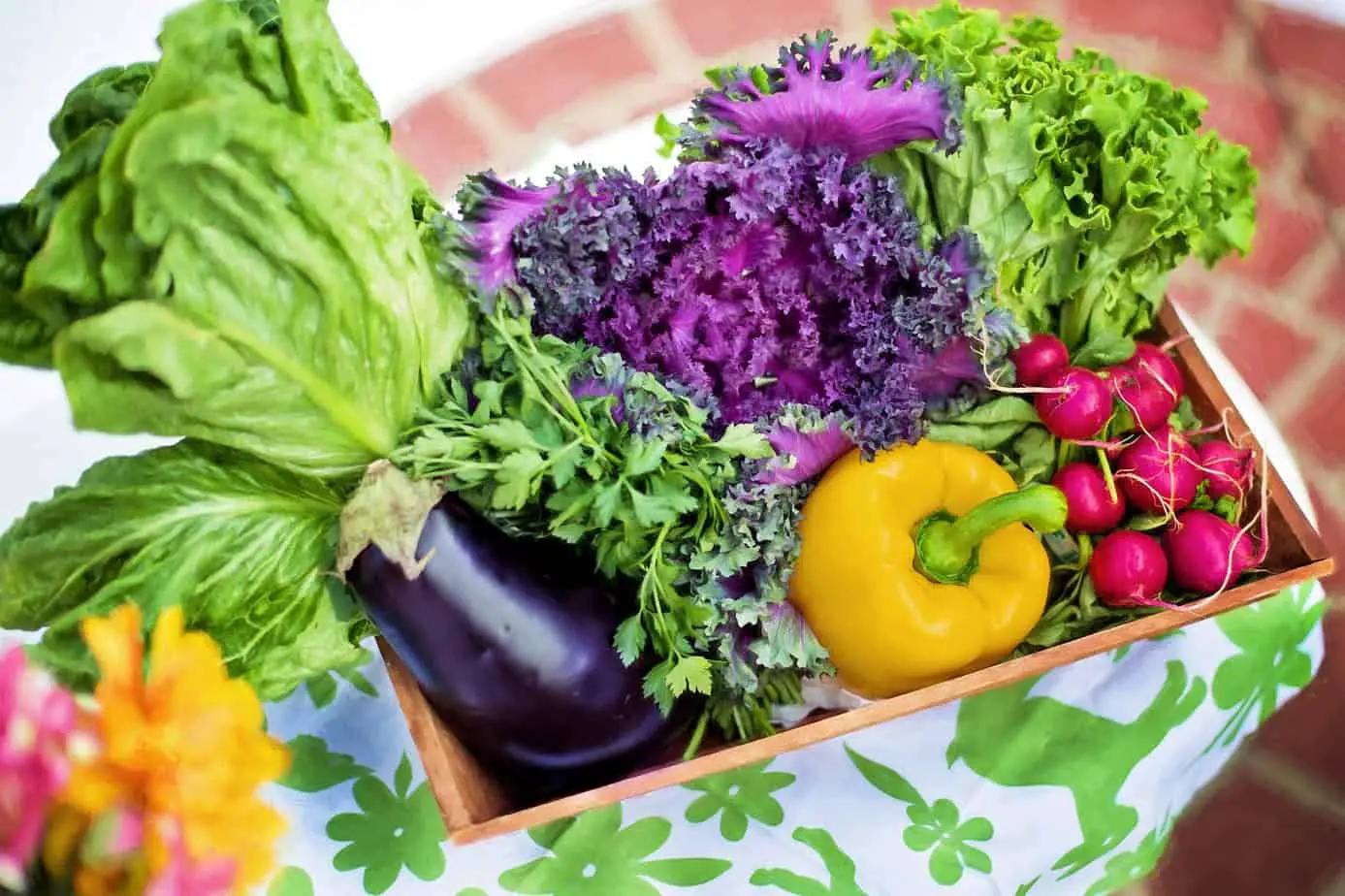Gardening is an excellent way to relieve your mind from stress, enjoy a little bit of sunlight, and do some physical exercise. It may seem like hard and sweaty work, but gardening is the perfect way for your mind and body to stay sharp and in tip-top form.
But many people don’t have access to any green fields where they can put their neat little garden. They are stuck somewhere in a concrete jungle, and the only viable option is to buy their vegetables in a grocery store.
Well, that is not entirely true, because there is another option – growing vegetables in a container. Container gardening has gained a lot of popularity in the last few years because it’s flexible, adaptable, and best of all, you know what you are putting on your plate.
If you think that you are in a hopeless position (you don’t have space to set up a full garden), then growing vegetables in a container is a perfect solution for you. And before you say, “It’s impossible to grow a lot of produce in such a small space,” keep reading and find out how to grow vegetables in containers and have fresh veggies on your table all year round. The second best thing – it’s a lot cheaper than to buy organic products from grocery stores.
Table of Contents
Benefits of Growing Vegetables in Container
People all over the world are enjoying the many benefits of container gardening. Some people do it because it is beneficial, and it is a worthwhile activity. Others find it as a hobby, and doing what you love and enjoying the fruits of your labor is really satisfying. If you want to become one of these people, here is a quick overview of the benefits that are waiting for you.
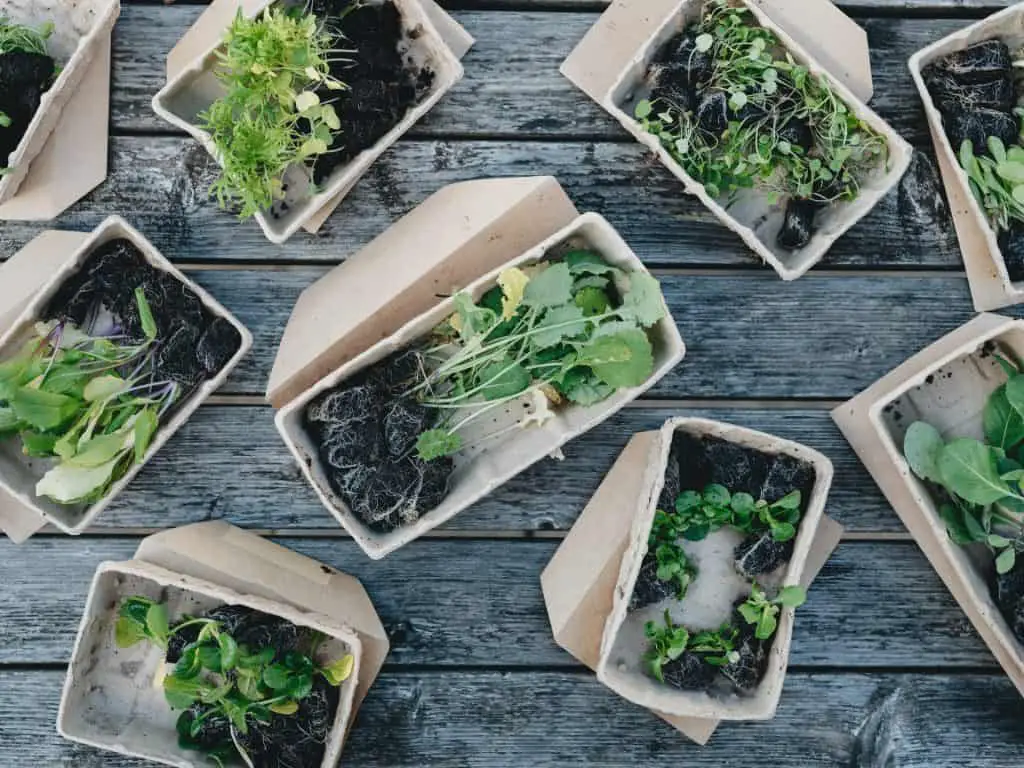
Image Courtesy of Unsplash
Growing vegetables in container is for everyone
Are you not sure how to grow vegetables in containers? Wondering if this is difficult? We have great news for you! Gardening in containers is highly adaptable and can be set up so that it can be enjoyed by everyone – no matter what your age or physical ability is. Conventional gardening can be difficult for people with specific physical disabilities (people who use wheelchairs, for example).
The growing space can be set up so that it has convenient access. That way, persons who may not enjoy working in a garden (or simply can’t) can still enjoy spending time in the garden.
It is a convenient method (especially for beginners)
The problem with traditional gardening is that, most often than not, you will have a massive problem with weeds. When you start making a traditional garden bed, you must dedicate more energy and time to prepare everything. If you don’t, you are at risk of having your beds overrun with weeds in no time, which can be quite discouraging.
Once you learn how to grow vegetables in containers, you will reduce those problems to a minimum. Due to their small size and easy mobility, container gardens allow you to move them to more sheltered spots where they won’t be exposed to weed seeds and other pests and diseases.
You can easily change the garden design
the ability to change the look and the theme of your garden another advantage of container gardening. You simply use the containers that have different colors, and voila – you have a completely new garden. You can use containers of any size and shape, and they can be made from any material. If the space that you are moving containers to is predominantly monochromatic, you can quickly transfer the plants to containers that are matching the color scheme. That way, your garden will always look beautiful and elegant.
Maintainance is a piece of cake
Gardeners often complain of back pain, among other health issues, because of too much hard work done while gardening and because tilling the ground can be quite a demanding and backbreaking job. Container gardening offers a no-till concept that is far better for plants because tilling the soil disturbs many natural organisms needed for a healthy garden.
With container gardening, you can easily incorporate healthy components into the soil without disrupting the balance or being worried about the damage caused by tilling—best of all, no back pain.
Harvesting the fruits of your labor will never be easier
What is the best part of learning how to grow vegetables in containers? Harvesting!
Harvesting of your vegetables and fruit are easier when grown in containers. Once the plants are ready for harvest, instead of having to dig them up, you can simply overturn the pots/containers on a plastic sheet for easy gathering.
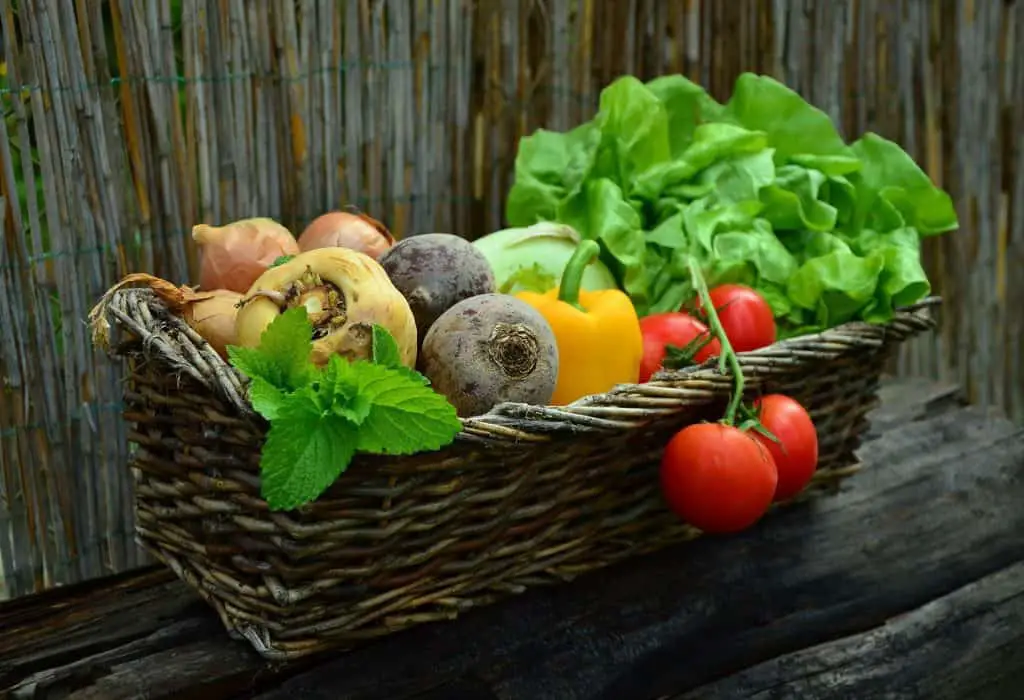
Image Courtesy of Pixabay
Container-grown plants require less resources
Compared to traditional outdoor gardening, the amount of water and nutrients needed to grow plants in a container is comparably reduced. A large surface area (used in conventional gardening) requires more water and nutrients because of the high evaporation coefficient.
The evaporation coefficient in containers is minimal and makes the plants require less watering and fertilizing, which also saves you time and money.
Related Posts:
- 15 Benefits of Artificial Grass – Is It the Latest Gardening Wonder or Too Good to Be True?
- 10 Essential Gardening Tools List and How to Use Them
- 10 Common Garden Pests: How to Get Rid of Them and Have a Healthy, Thriving Garden
- The Ultimate Guide to Mulching and Why Your Garden Will Thank You for It
- 11 Incredible Ways How Gardening Benefits Your Health
How to Grow Vegetables in Containers: 5 Easy Steps For Setting Up Your First Container Garden
Would you like to enjoy all of the incredible benefits of container gardening mentioned above? Keep reading to find out how to grow vegetables in containers and set up your first container garden.
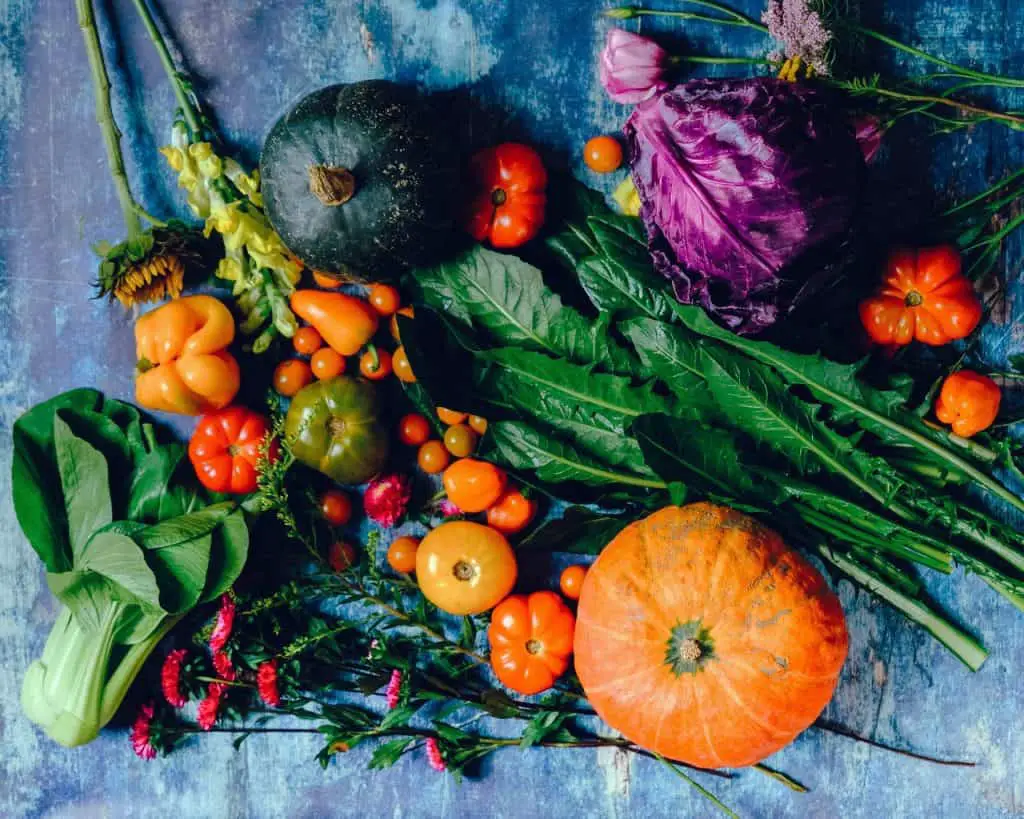
Image Courtesy of Pexels
Step 1 – It’s all about the preferred location
The first step is to thoroughly plan how your garden will look and where you will set it up. When planning a container garden, you should consider whether you’d rather grow your plants indoors or outdoors.
If you want to have your container garden outside, you’ll want to pick a location with the right amount of sun for the plants you want to grow, but it should also be a very open place.
If you want to have your plants indoors, you’ll need to pick you’ll need to choose the warmest spot in your building because most plants won’t do well in very cold spaces. If you can, choose a bright space with natural sunlight, but you can always use specialized lamps and lightning equipment if you don’t have that luxury.
Step 2 – Choosing the right container
Preparing the containers and the soil needed for each plant will be the most fun part of your urban project. Our recommendation – let your imagination run wild!
The best container is any container you can find – you can use boxes, pots, baskets, tubs, and even bathtubs, just be sure that there are drainage holes in the bottom. You should also keep in mind that the size of the containers you use will be determined by the kind of plants you would like to grow.
Piece of advice – avoid tiny containers, as they often can’t absorb sufficient water to get through hot summer days, and if you choose the bigger container, the more plants you can cultivate. But you need to make sure that you can easily move that container in case of adverse weather conditions.
Step 3 – Choosing the best plants
There are two ways to approach this step – you can start growing your veggies from seed or buy seedlings. Both courses have significant advantages and disadvantages.
Planting your seeds is much less expensive than buying seedlings, and you can organically grow hard-to-find plant varieties. But seeds need 12 to 16 hours of light per day and good air circulation to grow correctly, and they require a precise amount of water – if they are too dry, they are toast, and if you give them too much water, they’ll keel over dead.
On the other side, seedlings are more expensive, but they are much less demanding.
Plants that typically grow well in containers are:
- Peas – best to grow from seedlings; they need frequent watering and often fertilization; also, they require tall supports in the container
- Tomatoes – very similar to peas as far as demands go
- Potatoes – grown from “seed potatoes”; you need to be careful because most varieties have a long growing season, so you should focus on varieties that mature early
- Carrots – grown from seeds; they are not demanding, but you’ll need to use a container that’s double the depth your variety will grow.
- Radishes – similar to carrots as far as demands go, but containers don’t have to be that; they can be harvested twice a year
- Eggplants – grown from seeds; fairly sensitive to low temperatures and shade
- Summer or zucchini squash and cucumbers – can be grown from both seeds and seedlings; bush varieties are preferable to sprawling vine varieties; they need wide containers because they don’t like to be crowded
- Leafy greens – best to grow from seeds; when they are ready, they can be harvested multiple times; somewhat tolerant to shade
Plants that you should avoid growing in containers are large melons, corn, and large pumpkins or squash because they require a lot of space, height, and attention.
Step 4 – Maintaining your garden
Having a good plan gives you a great start, but even if a new idea pops into your mind along the way, it won’t harm your precious project.
The key to successful maintenance is organization. It would be best if you kept your place well organized, and you’ll notice that there is not much work involved other than regular watering and adding nutrients. It’s nothing like maintaining a conventional garden where you have to till and shovel around, which often causes exhaustion and back pain.
The best thing you can do is find a convenient place for everything – your tools, containers, and compost place. And planning the work is somewhat a must. That way, everything will be easily accessible, and the work won’t be exhausting.
Pests and diseases are also easy to handle. There are many natural remedies you can prepare at home if, by any chance, your plants become infested with pests or diseases. Also, if you don’t have much time on your hands, there are excellent solutions that you can find in practically any garden store.
Making your own compost is a total piece of cake – you can use leftover food, fruit, or vegetable peels – virtually anything that can decompose. This will give you the chance to go green – you will help the environment and give your plants the natural nourishing elements that they need to grow healthy and beautiful.
Step 5 – Reaping the fruits of your labor
If you successfully passed all previous steps – you’ve learned how to grow vegetables in containers. Now, it’s time for you to reap the well-earned fruits of your labor. First, you need to learn a few invaluable lessons about the ideal time to harvest and the best means of picking to avoid damage to both crops and plants.
Here are a few tips that will make your harvesting much easier:
- Check the seed packs to understand the harvest time better
- Keep a record in a journal to help you make notes
- Record what you have planted and the dates to know the time they would be ready for harvesting
- Do not pick the plants earlier because the seeds might not be adequately matured to keep for reseeding
- Cut the stalks at about 5cm from the fruit to increase storage time
- The maturity times can vary with different plants – some of them grow quicker, some slower, and some can provide produce for up to several months
- Plants use a vast amount of their energy in fruiting and flowering – ensure that they have enough soil nutrients to assist them in producing plenty of crops, and also to build their immune system, which makes them more resistant to diseases and pests
- leafy greens are best to harvest in the late afternoon or early evening instead of the morning – that way, you’ll avoid having nitrates in your food (nitrates are converted to harmless substances by sunlight)
Container gardening has gained a lot of popularity in the last few years because it’s flexible and adaptable. After, all it offers an effortless and convenient way for you to start gardening if you live in small apartments or it seems that you are cursed with the smallest backyard on the planet.
From planning to execution – every step is fun and engaging, and it is guaranteed to bring you immense pleasure and satisfaction. First of all, you know what you are putting on your plate, and secondly, it’s much cheaper than buying fresh, organic produce from the farmer’s market or grocery store.
Remember, only do things that you enjoy most, and don’t invest time and energy into growing something that you don’t like or won’t eat. After all, you are the plan maker, and in the end, only your choice matters.
We hope that our guide helped you learn how to grow vegetables in containers. If you do decide to make this your new hobby, we have one more advice for you. If you need to get rid of pesky bugs or diseases, don’t forget to spray above and below the leaf and try to do this in the late afternoon, so the sun doesn’t get a chance to burn your plants – and your good bugs too.
